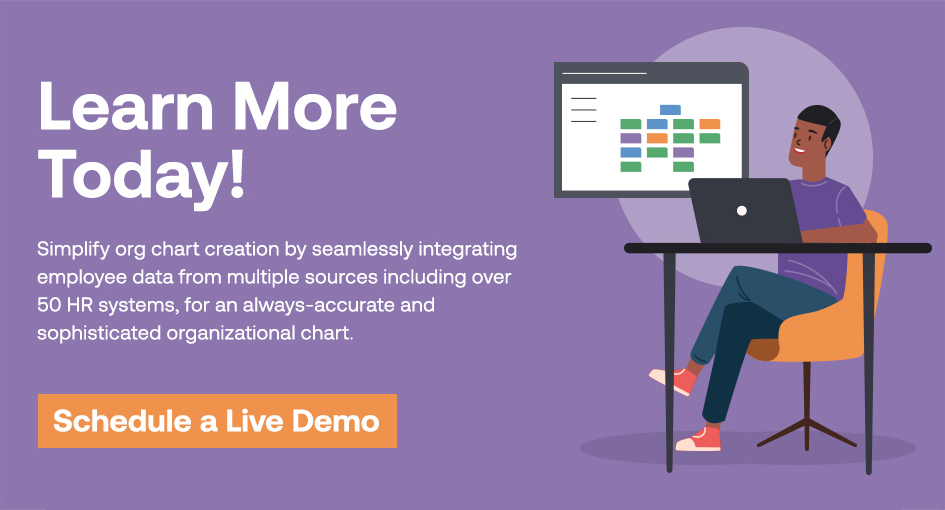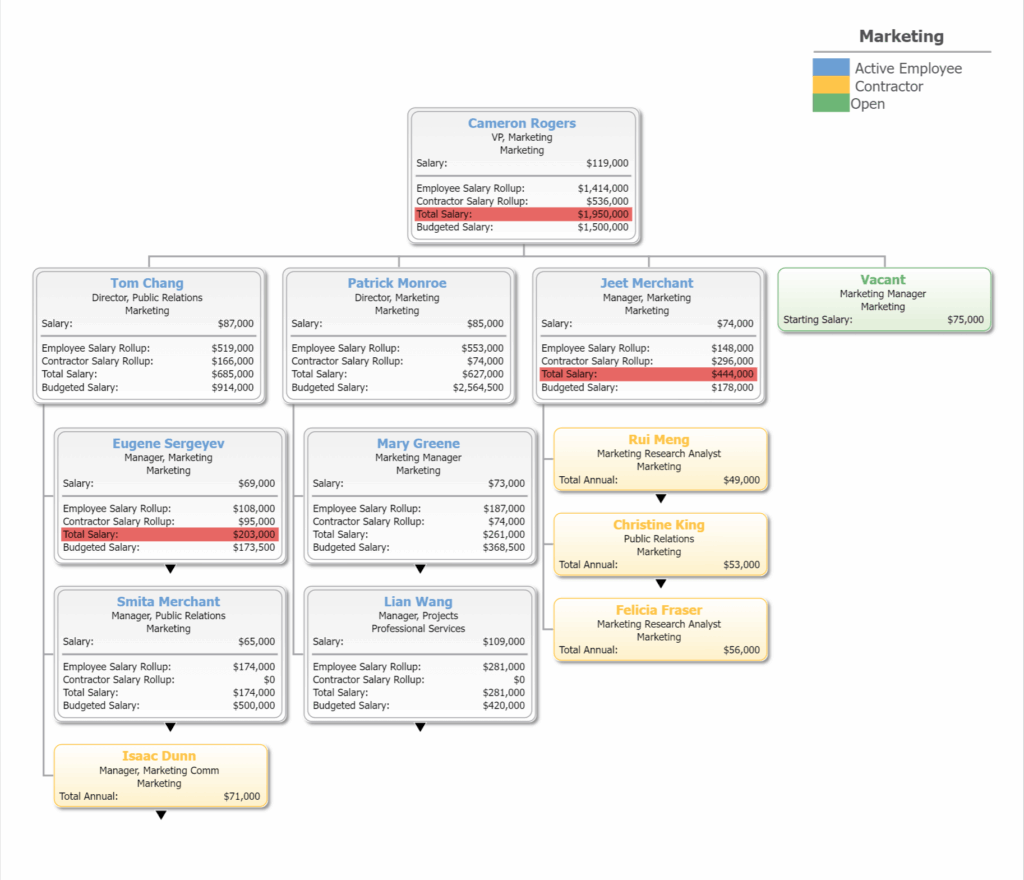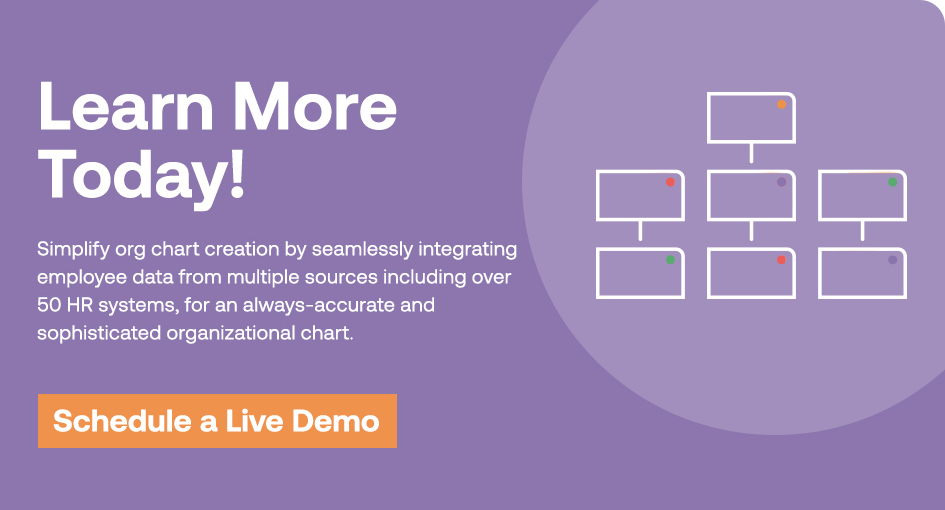Unlocking the full potential of your organization is a goal that resonates with leaders across industries. To put this aspiration into action, it’s essential to focus on the quality of communication within your team. After all, data shows that organizations with effective internal communication are 4.5 times more likely to outperform their peers.
But effective communication is just one piece of the puzzle. A well-defined structure that allows for collaboration and forward-thinking planning is equally crucial. Enter the organizational flow chart, a powerful tool that can guide your organization towards its peak performance.
Table of contents
Understanding Organizational Flow Charts
A key component to adapting and planning for your company’s future is understanding and visualizing your organization’s structure. That’s where organizational flow charts – sometimes referred to as org chart flow diagrams or simply org charts – come into play. These diagrams are indispensable tools for understanding your company’s hierarchy and workflow, and, importantly, for visualizing your workforce structure.
Organizational flow charts are visual representations of your company’s hierarchy, roles, and relationships. They present an intuitive, bird’s-eye view of your organization’s structure, allowing you to grasp complex structures at a glance. These charts depict the reporting lines, employee positions, and connections among departments and teams.
But why are these flow charts so important? They serve as a fundamental pillar of workforce planning and management. When created and utilized efficiently, they can alleviate many pain points faced by HR professionals and business leaders.
It’s important to note that not all organizational flowcharts are the same. That’s why it’s critical to use an automated solution with robust features and capabilities, like OrgChart. By choosing the right technology, you’ll enhance decision-making, promote communication, and help you plan for the future.
Want to learn what sets OrgChart apart? Read more here.
Without further ado, below are three ways to use your organizational flow charts to advance your organization.

1. Streamline Org Structure Visualization
As stated, organizational flow charts are designed to simplify the complex process of viewing your company’s organizational structure. They comprise several key components and features that collectively make the task of org structure visualization more manageable and effective.
Below are ways your org chart helps you streamline and visualize your workforce structure:
Hierarchy Representation
At the heart of any organizational flow chart is a clear, structured representation of a hierarchy. Your org chart reflects who reports to whom within your organization, making it easy to discern the chain of command. Hierarchies are depicted in a logical, visually intuitive manner, simplifying understanding of who holds key positions and how they relate to one another.
Position and Employee Information
Each box in your org chart flow diagram contains essential information about a specific position or employee. This information typically includes the job title, the name of the individual in the role, and sometimes additional details such as contact information or department. Having all this information in one place ensures that you can quickly identify the key players in your organization.
Connecting Lines
Connecting lines between positions or employees visually represent the relationships and reporting structures within your organization. Organizational flow structure diagrams make visualizing workforce structure crystal clear by showing who reports to whom, enabling a seamless understanding of the flow of authority and responsibility.
Departmental Division
Organizational flow charts also excel at showcasing the division of departments or teams. With the right org chart software, each department can be color-coded or labeled, making it easy to distinguish between different areas of your organization. This feature is particularly valuable when assessing how various parts of your company interact and cooperate.

2. Enhance Succession Planning
Succession planning is strategically imperative for the long-term success and stability of any organization. It revolves around the meticulous identification and cultivation of talent within your company, ensuring a seamless transition of leadership roles when the need arises.
Although succession planning sounds complex, it doesn’t have to be. With a succession planning flow chart, you can:
Determine a Clear Path to Succession
Imagine a scenario where a key executive suddenly decides to retire or unexpectedly departs from your organization. In such a situation, the absence of a well-prepared successor can be a considerable challenge. Without a structured plan in place, the organization might struggle to maintain its momentum, face potential disruptions, or even lose valuable talent. Succession planning flowcharts are the solution to these uncertainties.
Pinpoint Potential Successors
One of the primary functions of organizational flow charts in succession planning is the ability to pinpoint potential successors with precision. Let’s consider a hypothetical scenario: Sarah, the Head of Marketing, announces her retirement. With an up-to-date organizational flow chart in hand, HR professionals can quickly identify individuals in the department who have the skills and experience to step into Sarah’s shoes. This clear visual representation allows leaders to make well-informed decisions about who to consider for succession, narrowing down the list of candidates with minimal guesswork.
Assess Readiness
Succession planning not only involves identifying potential successors but also evaluating the readiness of individuals to take on more significant responsibilities. In this regard, organizational flow charts provide invaluable insights. HR professionals can use these charts to assess each candidate’s current role, experience, and skills. For instance, when Sarah’s retirement is impending, leaders can assess whether a candidate like John, a Senior Marketing Manager, has the expertise and potential to step into the Head of Marketing role. The visual clarity of the chart streamlines the evaluation process, ensuring that candidates are selected based on a well-informed assessment.
Invest in Future Leaders
Succession planning isn’t just about having a contingency plan; it’s also a proactive strategy for training the next generation of leaders within your organization. Your org chart will help identify potential successors early in their careers, allowing HR professionals to provide targeted development opportunities and mentorship to prepare them for future leadership roles. This strategy ensures that the organization has a pool of capable and confident leaders ready to step in when needed.
Enable Business Continuity
The ultimate goal of effective succession planning is business continuity. With succession planning flow charts as a central tool in your strategy, you can sleep tight knowing that your organization is well-prepared to navigate leadership transitions smoothly. In the event of unexpected departures or planned retirements, the transition becomes more like passing the baton in a relay race, rather than an abrupt disruption.
Need to create (or update) a transition plan for your CEO? Read our guide here.
3. Address HR Pain Points
HR professionals often – and understandably – find themselves overwhelmed with a variety of tasks. Organizational flow charts prove to be a powerful ally in simplifying several aspects of their role, ultimately saving time and effort.
You can address organizational pain points with an org chart flow diagram because it promotes:
Streamlined Communication
Efficient communication is essential for HR professionals, whether it’s explaining organizational changes, clarifying reporting lines, or ensuring that employees understand their roles. Organizational flow charts provide an at-a-glance resource to share with employees, managers, and new hires. This visual aid is a powerful tool for clarifying roles and relationships, streamlining communication, and reducing misunderstandings within the organization.
Efficient Decision-Making
In HR, decision-making often hinges on an accurate understanding of the organizational structure. When HR professionals have to make decisions about promotions, role changes, or expanding teams, they can turn to organizational structure flow diagrams. These charts provide immediate insight into potential candidates, their readiness for new roles, and the potential impact on the overall structure. Using up-to-date org charts not only speeds up the decision-making process, but also improves its accuracy.
Time and Resource Savings
Perhaps the most significant advantage of using organizational flow charts is the substantial time and resource savings. Creating and maintaining org charts manually can be a tedious and time-consuming task, especially in large organizations. With dedicated software and tools designed for org chart creation, HR professionals can update charts in real-time, eliminating the need for frequent manual revisions. This automation frees up valuable time that HR teams can redirect towards strategic initiatives, employee engagement, and talent development.

Getting Started With Your Organizational Flow Chart
It comes as no surprise that you need an organizational flow chart in your toolkit. Because they aid in visualizing workforce structure, succession planning, and tackling HR pain points, org charts promote internal communication, collaboration, and informed decision-making.
If you’re ready to get started, consider OrgChart, an automated software that effortlessly integrates with your tech stack so you can start leveraging your people data and uniquely-designed charts today.
